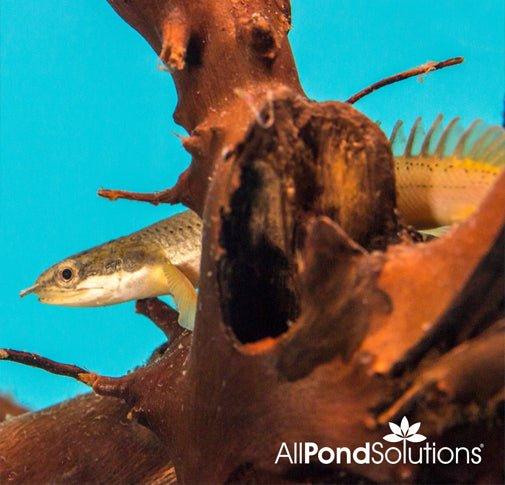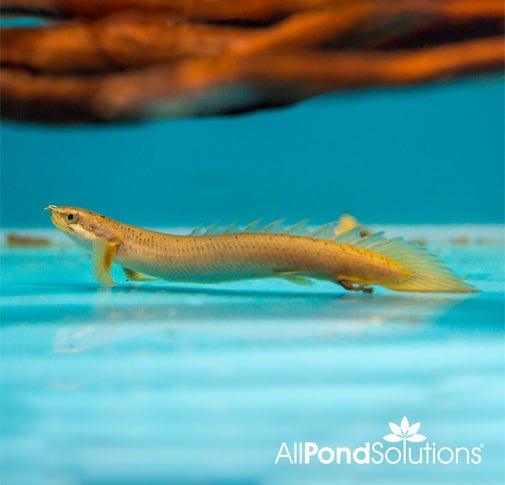Please note – Size, colour and sex may vary. Many of our livestock species are sold as juveniles and have not yet reached their full size and colour potential.
The Senegal Bichir (Polypterus Senegalus) is also known as the Grey bichir and Cuvier's bichir.
Scientific Name: 
Polypterus Senegalus
Approximate purchase size: 
7cm
How easy are they to care for?
Keeping them is rather easy as they can adapt to various water conditions.
A well-decorated aquarium with well rooted and overhanging plants is appreciated as Bichirs are mainly nocturnal and do not like bright lighting. The base of the plants need to be protected by rockwork though, otherwise, a large bichir will eventually uproot and destroy them. Offer plenty of caves in the form of rockwork and bog/wood/driftwood along with medium to medium-fine sand or gravel as a substrate. The recommended minimum aquarium capacity is 480 litres.
How large can they grow?
Up to 50cm
Where in the world are they from?
Originally from Senegal, this species is more widespread than any other bichir and occurs in no less than 26 countries in Africa, including Egypt, Cameroon and Ethiopia.
What is the ideal number to keep together?
They will eat others of their own kind given the chance though, so other Bichir tankmates should be close to the same size.
What water conditions do they require?
Will accept temperatures from 24 to 28°C and a pH range between 6.2 - 7.8.
What should you feed them?
Predatory fish. Feed meaty live foods such as black worms, blood worms, and earthworms along with frozen foods such as brine shrimp, mysis shrimp, and beef heart. 
How compatible are they with other fish?
Not to be trusted with tankmates it can fit in its mouth but is relatively peaceful otherwise. Suitable tankmates include other Polypterus species, Knife Fish, larger Ctenopoma species, medium to large characins and African Butterfly Fish.
Can they be bred in captivity?
They are extremely difficult to breed in captivity. To stimulate bichirs to breed, a combination of top quality water, very frequent water changes, soft/acidic water (around a low 6 PH), and careful temperature changes are required. The reason for this is the need to simulate the dry to rainy seasons which occur in their natural habitat.









